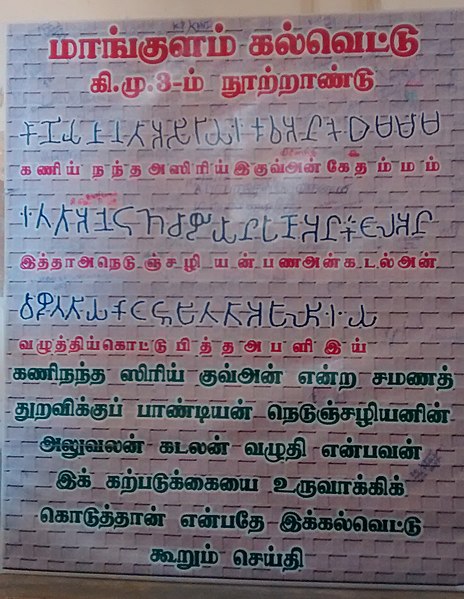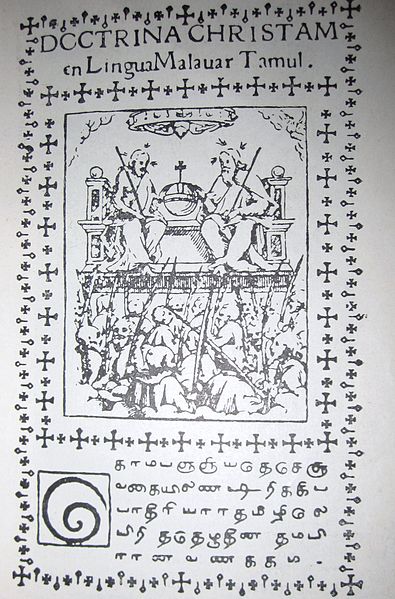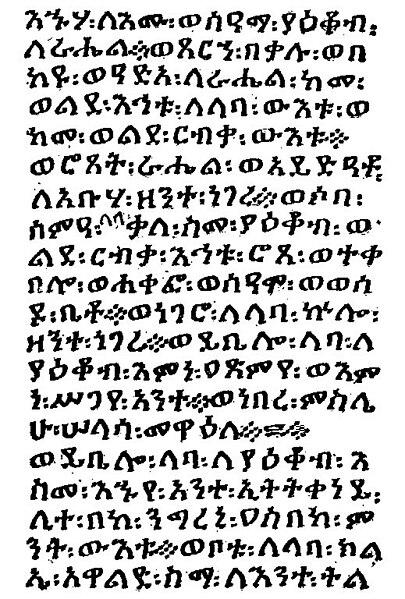The Tamil script is an abugida script that is used by Tamils and Tamil speakers in India, Sri Lanka, Malaysia, Singapore, Indonesia and elsewhere to write the Tamil language. It is one of the official scripts of the Indian Republic. Certain minority languages such as Saurashtra, Badaga, Irula and Paniya are also written in the Tamil script.
Historical evolution of Tamil writing from the earlier Tamil-Brahmi near the top to the current Tamil script at bottom
Mangulam Tamili inscription in Mangulam, Madurai district, Tamil Nadu dated to Tamil Sangam period c. 400 BCE to c. 200 CE.
Explanation for Mangulam Tamil Brahmi inscription in Mangulam, Madurai district, Tamil Nadu dated to Tamil Sangam period c. 400 BCE to c. 200 CE.
Image: Thambiran Vanakkam 1578
An abugida – sometimes also called alphasyllabary, neosyllabary, or pseudo-alphabet – is a segmental writing system in which consonant–vowel sequences are written as units; each unit is based on a consonant letter, and vowel notation is secondary, similar to a diacritical mark. This contrasts with a full alphabet, in which vowels have status equal to consonants, and with an abjad, in which vowel marking is absent, partial, or optional – in less formal contexts, all three types of the script may be termed "alphabets". The terms also contrast them with a syllabary, in which a single symbol denotes the combination of one consonant and one vowel.
A 19th-century manuscript in the Devanagari script
The Ge'ez script, an abugida of Eritrea and Ethiopia






